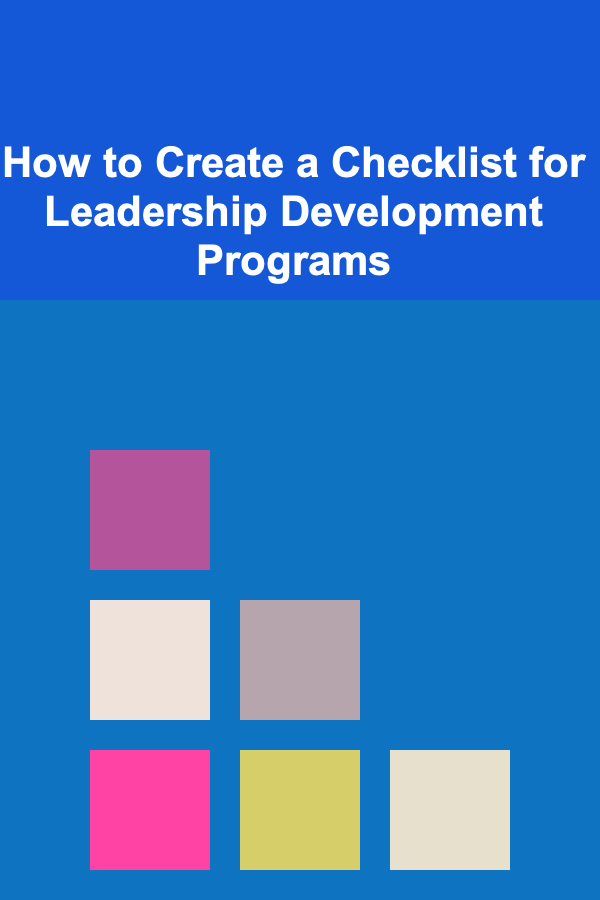
How to Become a Freelance Web Designer and Work from Home
ebook include PDF & Audio bundle (Micro Guide)
$12.99$9.99
Limited Time Offer! Order within the next:

The idea of working from home as a freelance web designer has become increasingly popular over the years. Whether you're looking to escape the 9-to-5 grind, pursue your passion for design, or find a more flexible work-life balance, freelancing as a web designer offers incredible freedom. However, becoming a successful freelance web designer requires more than just having design skills. You need a solid plan, a portfolio, clients, and the right mindset.
In this guide, we will take a deep dive into the steps you need to take to become a freelance web designer and build a sustainable career working from home.
Master the Fundamentals of Web Design
The first step in becoming a successful freelance web designer is to master the fundamentals of web design. While this may seem obvious, it's crucial to ensure you have a strong foundation in both design principles and technical skills.
Core Web Design Skills
- HTML/CSS: HTML is the backbone of web content, while CSS controls the layout and visual appeal. Familiarity with these languages is essential, even if you use website builders or CMS platforms.
- Responsive Design: As users access websites across a wide range of devices, understanding how to create responsive designs that adjust based on screen size is crucial.
- UX/UI Principles: User experience (UX) and user interface (UI) design are central to creating websites that are both functional and aesthetically pleasing. Study the fundamentals of user research, wireframing, prototyping, and usability.
- Design Software: Get comfortable using industry-standard design tools like Adobe XD, Figma, and Sketch for creating wireframes, mockups, and prototypes.
Stay Updated with Industry Trends
Web design is a rapidly evolving field. It's important to stay up to date with the latest trends and tools to remain competitive in the market. Subscribe to web design blogs, attend webinars, and participate in design communities to keep your skills sharp.
Develop Your Portfolio
A strong portfolio is your most valuable asset as a freelance web designer. It's the primary way potential clients will assess your skills and style. If you want to attract clients, you need to showcase your best work, even if you're just starting out.
What to Include in Your Portfolio
- Personal Projects: If you're just starting, create your own websites or redesign existing ones. This shows off your design skills and allows you to experiment with different styles.
- Case Studies: Go beyond showing finished designs. Include case studies that explain the process behind your projects---how you approached the design, any challenges you faced, and how you solved them. This gives potential clients insight into your problem-solving skills.
- Diverse Examples: Show a range of designs, such as e-commerce sites, landing pages, blogs, and portfolios, to demonstrate your versatility.
- Professional Work: As you gain clients, add your professional work to your portfolio. If you've worked on clients' websites but are restricted from sharing them, ask for permission or at least write about the project.
Build Your Portfolio Website
A portfolio website is essential for establishing your credibility as a web designer. This should be your most polished project. Not only does it serve as your portfolio, but it also demonstrates your design and coding skills. Make sure it's responsive, fast, and user-friendly.
Set Up Your Freelance Business
Starting a freelance web design career requires more than just technical skills---it's also about running a business. Here are the key steps you need to take:
Choose Your Niche
While it might seem tempting to be a "jack of all trades," it's often more beneficial to specialize in a specific niche. By focusing on a particular industry (e.g., e-commerce, healthcare, or education), you can differentiate yourself from the competition and become an expert in that field.
Legal and Financial Considerations
- Register Your Business: Depending on your location, you may need to register your freelance business with local authorities. This could be as simple as registering as a sole proprietor or establishing an LLC for tax and liability reasons.
- Set Your Rates: Research the average rates for freelance web designers in your region and field. You can choose between hourly rates or flat fees per project. As a beginner, you may want to start with lower rates to attract clients, but ensure they align with your skills and the market.
- Tax Considerations: Freelancers are responsible for paying their own taxes. Track your income and expenses carefully and set aside money for tax payments. Consider hiring an accountant or using accounting software to keep everything organized.
Create Contracts and Agreements
Contracts protect both you and your clients. Always have a written agreement in place that outlines the project scope, deadlines, deliverables, payment terms, and any other relevant details. This helps avoid misunderstandings and ensures you get paid for your work.
Find Clients and Build Your Reputation
Finding clients is one of the most challenging aspects of freelance work, but it's also one of the most rewarding. Building relationships with clients and ensuring they're happy with your work will lead to repeat business and referrals.
Start Small and Network
- Start with Friends and Family: Offer your services to people you know to build up your first projects and gather testimonials.
- Freelance Platforms : Platforms like Upwork, Fiverr, and Freelancer.com can help you get your first clients. While the competition is fierce, you can start small by bidding on projects within your skill range.
- Social Media: Use platforms like Instagram, Twitter, and LinkedIn to showcase your work. Share behind-the-scenes content, client success stories, and design tips to engage with your audience.
- Networking: Attend local or virtual networking events, join online communities, and engage with other web designers and potential clients.
Building Trust and Delivering Value
- Clear Communication: Keep your clients informed throughout the project and be responsive to their needs.
- Set Realistic Expectations: Avoid over-promising and under-delivering. Be clear about timelines, pricing, and what's included in your services.
- Deliver High-Quality Work: Always strive to exceed expectations. Happy clients are more likely to return and refer you to others.
Managing Your Workflow and Finances
Once you start gaining clients, managing your time and finances becomes essential to running a successful freelance web design business.
Time Management
- Use Project Management Tools : Tools like Trello, Asana, and Monday.com can help you manage your projects, track deadlines, and stay organized.
- Set Boundaries: As a freelancer, it's easy to get caught up in work at all hours. Set working hours and stick to them to avoid burnout.
- Prioritize Tasks: Break large tasks into smaller, manageable steps. Focus on one project at a time to ensure quality work.
Financial Management
- Track Your Income and Expenses: Keep track of all your income and expenses for tax purposes and to understand your cash flow.
- Save for Taxes: Set aside a percentage of your income for tax payments. You may also want to make quarterly tax payments to avoid a large bill at the end of the year.
- Invest in Tools: Invest in tools that improve your workflow, such as premium design software, hosting services, and professional email addresses.
Growing and Scaling Your Freelance Web Design Career
Once you've established your freelance web design business, you can start thinking about scaling. Growing your business allows you to take on more clients, increase your income, and even consider expanding into an agency.
Ways to Scale Your Business
- Hire Other Freelancers: As your workload increases, you can hire other designers or virtual assistants to help with the workload.
- Increase Your Rates: Over time, as you gain more experience and build your reputation, you can gradually raise your rates to reflect your expertise.
- Diversify Your Services: In addition to web design, you can offer services like SEO, digital marketing, or content creation to attract a broader range of clients.
Ongoing Learning and Improvement
The world of web design is constantly evolving, so it's important to continue learning. Take advanced courses in web development, explore new design trends, and experiment with new technologies to stay ahead of the curve.
Conclusion
Becoming a freelance web designer and working from home offers unparalleled freedom and flexibility. However, it requires hard work, dedication, and a willingness to learn. By mastering the fundamentals of design, building a strong portfolio, finding clients, and effectively managing your business, you can build a successful freelance web design career that supports your lifestyle and goals.
Remember, success in freelancing doesn't happen overnight, but with patience and persistence, you can create a thriving web design business from the comfort of your home.

How to Create a Checklist for Leadership Development Programs
Read More
How to Design a Pet-Friendly Living Room for Relaxation
Read More
How to Maintain Your Home's Appliances for Longevity and Efficiency
Read More
How To Use Guerrilla PR for Exposure
Read More
How To Develop a Strong Professional Network
Read More
10 Tips for Improving Quality Score in Google Ads
Read MoreOther Products

How to Create a Checklist for Leadership Development Programs
Read More
How to Design a Pet-Friendly Living Room for Relaxation
Read More
How to Maintain Your Home's Appliances for Longevity and Efficiency
Read More
How To Use Guerrilla PR for Exposure
Read More
How To Develop a Strong Professional Network
Read More